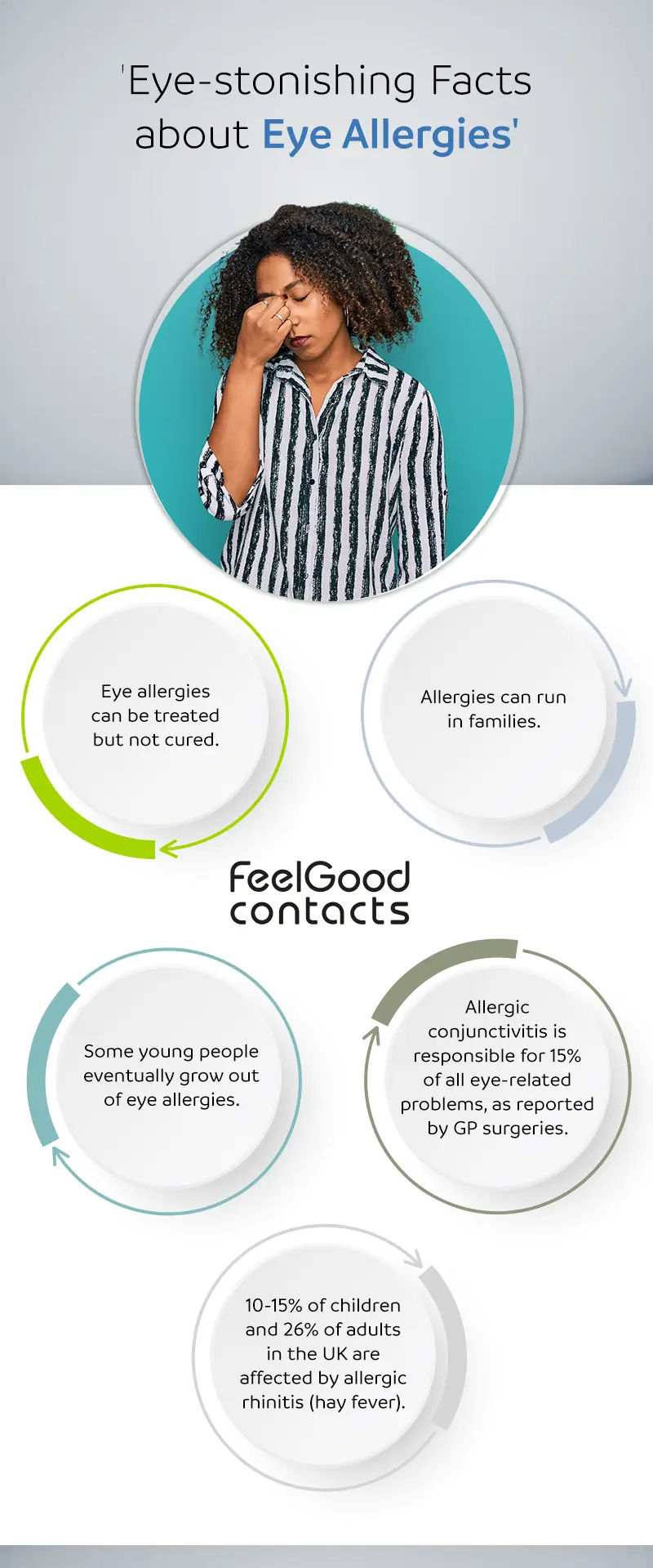
 Offers
Offers-
 Account
Account
-
0
 Favorite
Favorite
-
0
 Basket
Basket



This Allergy Awareness Week, which will take place between April 22nd and 26th, 2024, discover everything you need to know about eye allergies. This informative article will provide you with a detailed understanding of eye allergy symptoms, their underlying causes, potential triggers, effective treatment options, and how to effectively manage eye allergies to minimise their impact on your daily life.

Eye allergies, also known as allergic conjunctivitis or ocular allergies, are triggered by the same irritants that cause sneezing, a runny nose, itchiness, and other allergy symptoms. Common airborne allergens include dust, pollen, pet dander, and mould. When these irritants affect the conjunctivitis and eyelids, they cause eye allergies. Unlike other types of conjunctivitis, eye allergies cannot spread from person to person. Even allergens such as food and insect stings that do not come into direct contact with the eyes can still cause irritation.
Certain cosmetic products, makeup, and eye drops can also cause eye allergies. It is essential to test products with small drops before using them in full. It is also recommended to read product labels and consult with an eye care professional if there are any doubts or concerns. Using preservative-free eye drops is also advisable since they are less likely to cause irritation.
There are several indications that suggest an allergic reaction in your eye. However, to confirm whether these symptoms are related to an eye allergy, it is best to consult a doctor or an eye care professional for a medical diagnosis.
The symptoms of an eye allergy can include the following:
Eye allergies can sometimes be accompanied by other symptoms, such as nasal allergies, which may cause an itchy or stuffy nose and sneezing. Additionally, eczema can also be present in some cases. However, eye allergies can also occur independently without any other symptoms.
There are a variety of eye allergy triggers, including:
Though you may not be able to avoid an eye allergy altogether, you can take several measures to reduce its symptoms.
You can limit your outdoor exposure by:
Ways you can limit your indoor exposure by:
You can limit your exposure to eye allergies caused by pets by:
Eye allergies have similar symptoms to some eye conditions. Therefore, it is crucial to get an accurate diagnosis to identify the root cause. To do this, you can consult an allergist or ophthalmologist who can perform tests to determine whether the symptoms are caused by an eye allergy or something else.
To diagnose an eye allergy, the ophthalmologist may use a microscope to examine the eye and look for swollen blood vessels on the surface. They may also take a culture scraping from the conjunctiva and test for specific white blood cells that indicate an eye allergy.
You may not be able to get rid of eye allergies for good; however, prescription eye drops and medications can reduce the symptoms. Your doctor may prescribe the following as well as eye drops for allergies:
It is a good idea to seek advice from your doctor or optician as they can give you tailored advice based on your symptoms and discuss additional measures.
There are various eye drops which can help to relieve symptoms of eye allergies and it would be best to see an eye care professional to determine which ones are the best for you. Some are available over the counter at the pharmacy/optician, and other stronger medicines need a prescription.
During pollen season, seasonal allergies typically last for 4-8 weeks. Other allergies can be triggered at any time, and an allergic reaction can persist as long as the allergen is present.
Eye allergies usually affect both eyes, but if one eye is exposed to the allergen, it may cause an allergy in that eye only. For instance, if you rub only one eye with the allergen.
Disclaimer: The advice in this article is for informational purposes only and does not replace medical care or an in-person check-up. Please check with an eyecare professional before purchasing any products or remedies. For information on our article review process, please refer to our Editorial Policy.